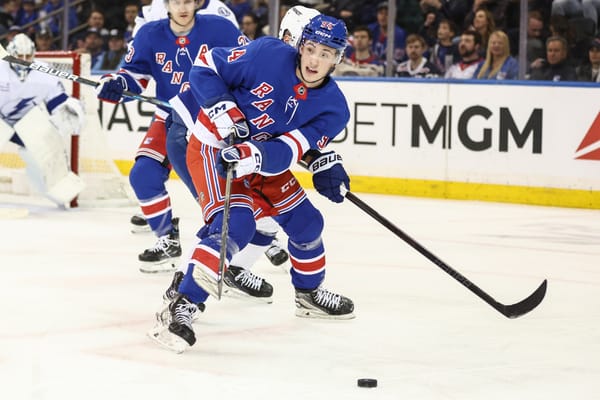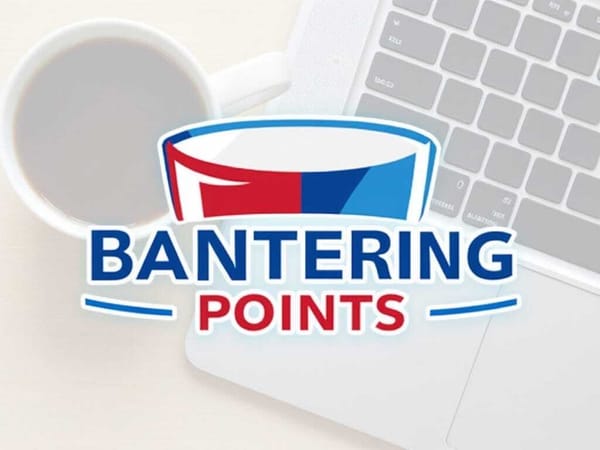The Rangers Need to be Careful With Ryan Spooner
When the Rangers made the decision to trade away most of their pending free agents at this season’s trade deadline, Rick Nash was the biggest name they made available. In spite of being in the midst of a down season at the time of the trade, Nash still had the reputation and name recognition of a player that could fetch a sizable haul on the rental market, and Jeff Gorton was able to extract that from the Boston Bruins. For 23 games of Nash in a Bruins uniform, the Rangers received the 26th overall pick in this month’s Entry Draft, a 7th round selection in next year’s draft, defensive prospect Ryan Lindgren, as well as forwards Matt Beleskey and Ryan Spooner.
As the only asset acquired who could be a meaningful piece of New York’s puzzle in the near future, Spooner’s future with the team has been one of the major topics of debate since the season’s conclusion. As one of the team’s four restricted free agent forwards, joining the likes of Jimmy Vesey, Kevin Hayes, and fellow trade deadline acquisition Vladislav Namestnikov, his spot on Broadway is anything but guaranteed. In spite of strong point production following his acquisition, (16 points in 20 games as a Ranger, which led the team after his arrival) the organization’s glut of middle six forwards will likely force somebody out prior to the beginning of the 2018-19 campaign, and that somebody could be Spooner.
When grading Jeff Gorton’s performance over the past twelve months, Spooner’s inclusion in the Rick Nash trade was an element that made me pause when deciding how to grade the deadline rental deals. I eventually settled on a B/Incomplete, with the following caveat regarding Spooner:
I’m strictly of the opinion that trades can only be graded fairly at the time of the trade, but given Spooner’s situation I don’t think that’s easily done in this case. Spooner is a player that Boston had been looking to move in the right deal for years, and a wave of younger players beneath him on the depth chart finally pushed him out. He came to New York and posted 16 points in 20 games down the stretch, but Jeff Gorton can’t afford to fall in love with those numbers while ignoring the big picture.
To make a long story short, Spooner’s excellent point production, both in New York and Boston, has been undermined by horrendous shot and scoring chance differentials across the board. Signing him to a long term deal would be detrimental to the team’s future success, and his future with the team will make or break the grade of the Rick Nash trade.
After three seasons bouncing back and forth between Boston and AHL Providence, Spooner cemented himself as an NHL player by skating in 80 games with Boston during the 15-16 season. Since then, his on-ice results are among the more interesting ones of any active player. Among players with 1,300+ minutes of even strength ice time, Spooner finds himself among the league’s best point producers.
His 1.86 Points/60 puts him 73rd out of 359 skaters, which is comparable to a low-end first liner. Focusing only on primary points leaves Spooner with 1.35/60, which leaves him tied for 106th and is roughly equal to a high end second line player. His team consistently posts better goal results with him on the ice as well, as his +2.19 relative Goals For% attests to. For a player whose salary cap number didn’t crack the seven figure mark until this past season, that’s tremendous value. So what’s the catch?
As I briefly mentioned in the Gorton report card, Spooner submarines his team’s shot and scoring chance numbers relative to the rest of his teammates. Over the last three seasons, Spooner has posted a -2.6 relative Corsi For%, leaving him at 302nd out of the same group of 359 players. Manny Elk’s expected goals model paints an even uglier picture, as Spooner’s -5.26 relative xGF% mark leaves him 344th. His short stint on Broadway wasn’t much better either, as he posted a -4.6 relative CF% after arriving from Boston. Aside from a handful of upper echelon scorers, (Patrik Laine, Patrick Kane, and Phil Kessel to be specific) the majority of the players in Spooner’s company are either objectively bad NHL players (Nick Deslauriers, Cody McLeod, and Chris Thorburn just to name a few) or career 4th liners such as Dominic Moore and Daniel Winnik.
There aren’t any surface level reasons as to why Spooner’s shot metrics are so far underwater. Zone starts and player deployment have negligible impact on player performance, and what little effect they do have wouldn’t benefit him. Spooner’s Zone Start ratio of 59.87 shows that he’s received favorable offensive deployment throughout his time in the NHL, and the same principle holds true on an individual season level. His ZSR’s of 64.01, 54.99, and 61.94 all lean towards offensive usage, and Spooner has been in the red in shot and chance differentials each individual campaign since breaking into the league full time.
While line combos are subject to change throughout the season, there’s not enough room for every player currently on the roster receive playing time worthy of their cap number. Assuming the top line of Chris Kreider, Mika Zibanejad, and Pavel Buchnevich are safe from being moved, the rest of the roster is up in the air. As things stand now, Spooner would be competing with the aforementioned RFA’s, Mats Zuccarello, and Jesper Fast for ice time in the team’s top nine.
With Lias Andersson and Filip Chytil’s expected graduation to full-time NHL roles next season, as well as dark horse roster candidates like Cristoval Nieves and Brett Howden looking to break into the league, there won’t be enough room for everybody. On top of those factors, with the anticipated arrival of Ilya Kovalchuk, as well as the possibility of additional signings via unrestricted free agency, the Rangers are looking at at least a dozen players fighting for half a dozen spots in the middle six. Some of those players on lower cap hits could be bumped down to the 4th line, but that still leaves a surplus of players for a set number of roster spots.
So why is Spooner singled out as the player Jeff Gorton needs to be careful with? The primary reason is that the Rangers have been among the dregs of the league in shot and chance differentials over the last three seasons. On a team with strong shot metrics but woeful scoring like the Carolina Hurricanes or Los Angeles Kings, Spooner might be a useful addition to add depth scoring to their lineup. For a team like the Rangers, who have a handful of players like Spooner (and even traded one away during the fire sale) but are somewhat lacking on possession drivers outside of their top line, they can’t afford to pay through the nose for mediocrity.
In addition to that, the odds of Spooner getting a long term contract are significantly higher than Vesey or Namestnikov, and about the same as Hayes. In spite of up-and-down performances over the years, Hayes has proven himself as a capable second line center who can score without actively being a drag on shot differentials, so he’s earned a long term deal at a reasonable AAV. Vesey hasn’t proven himself as anything more than a marginal bottom six forward, and questions surrounding Namestnikov’s ability following his sub-par finish to the season in New York will likely limit those two players to bridge deals, so there isn’t much room for Gorton to make a franchise-altering mistake.
Between Chytil, Andersson, Howden, and anybody the Rangers might select in the upcoming Entry Draft, the team has organizational depth down the middle. Even if none of those players develop into top line talents, it’s likely that at least one of those players could replace Spooner’s production in the next few years, if not sooner. Regardless of what Spooner’s next contract ends up being, the odds of New York finding better value if they look elsewhere are strong. If a long term deal is off the table, that would leave Jeff Gorton with three options.
The first of which is to opt against tendering Spooner his qualifying offer and letting him walk into unrestricted free agency. That wouldn’t be the worst decision Gorton could make, but Spooner could easily fetch a draft pick or some sort of future asset if the team put him on the trading block, so the Rangers would be throwing away a trading chip for no reason.
The second option would be to sign him to a one year deal and kick the can down the road until the 2018-19 campaign. A one year pact would result in Spooner becoming a UFA next summer, so the team would have to decide between moving him during the season or keeping him for the long haul prior to the trade deadline.
Lastly, the Rangers could settle on Spooner being the odd man out of their current depth chart, and trade him away over the summer. Although the Bruins essentially dumped his salary onto New York’s roster in order to facilitate the Rick Nash trade, finding a team willing to give up a respectable asset for a team-controlled 26 year old coming off of a 45 point season couldn’t possibly be difficult.
Between the four restricted free agents, the trade rumors swirling around alternate captain Mats Zuccarello, and the influx of youthful skaters looking to break into the league on Broadway, Jeff Gorton has more options in navigating an offseason than he’s ever had since taking over as general manager. Those options come with plenty of room for a quick turnaround, as well as room to dig the franchise into a hole they wouldn’t be able to escape from in the near future. How the team handles their RFA’s will make or break their summer of 2018, and handling the Ryan Spooner situation the right way will go a long way towards a successful offseason.





